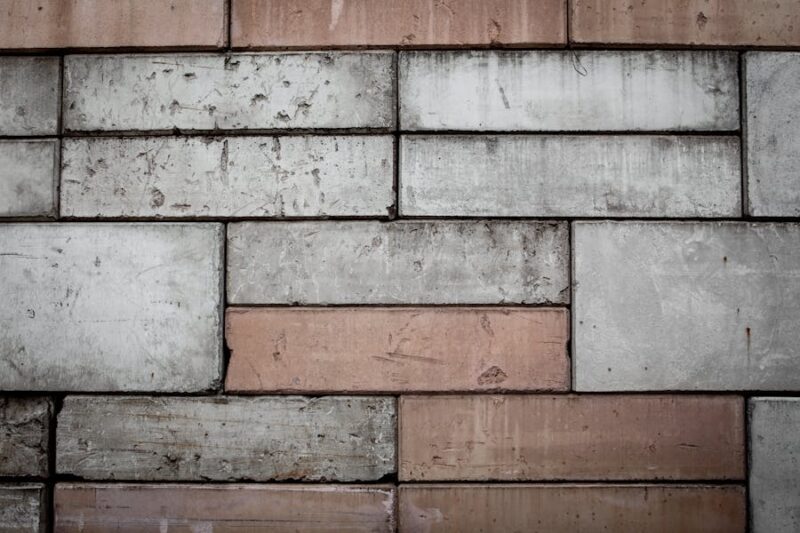The prospect of tiling over existing tile has become a topic of increasing interest among homeowners and renovators alike. In this comprehensive guide, we delve into the intriguing question: Can you put tile over tile? This innovative approach to tile installation offers numerous advantages, from cost savings to time efficiency. However, it’s crucial to understand when and how to undertake this process correctly to ensure the best results. We will explore the benefits and drawbacks, examine when it is appropriate, and provide a step-by-step guide to prepare, install, and maintain tiles over an existing tiled surface. Whether you’re a DIY enthusiast or a professional contractor, this article will equip you with the knowledge needed to make informed decisions about this unique tiling method.
Can You Put Tile Over Tile?
Yes, you can put tile over existing tile in many cases. It’s a practical and cost-effective solution for renovating spaces without the need for tile removal. However, it’s crucial to assess the condition of the old tiles, choose the appropriate adhesive, and follow proper preparation and installation procedures for a successful outcome. Always consider local building codes and regulations before tiling over existing tiles.
Why Consider Putting Tile Over Tile?
There are several compelling reasons to consider putting tile over existing tile:
- Cost-Effectiveness: Tiling over tile eliminates the labor-intensive and messy process of tile removal, saving you money on demolition and disposal costs.
- Time-Saving: Removing old tiles can be time-consuming. Tiling over tile significantly reduces project duration, allowing for quicker completion of renovations.
- Sustainability: Tiling over tile reduces waste and environmental impact by avoiding the disposal of old tiles and the need for new materials.
- Minimal Disruption: Tiling over tile minimizes disruption to your living or working space, making it a convenient option for ongoing projects or occupied areas.
- Preservation Of The Substrate: Tiling over existing tile can help protect the underlying surface, such as drywall or concrete, from potential damage during removal.
How To Prepare For Tiling Over Existing Tile?
Preparing for tiling over existing tile requires careful planning and attention to detail. Here are seven essential steps to ensure a successful tile installation:
Gather Necessary Tools And Materials: Measure the area to determine the quantity of new tiles, adhesive, and grout needed. Acquire the appropriate tile adhesive and mortar recommended for tiling over tile. Collect essential tools such as trowels, a tile cutter, a level, a rubber mallet, and safety equipment.
Remove Any Loose Or Damaged Tiles: Inspect the existing tile surface for loose or cracked tiles. Carefully remove any damaged tiles, using a chisel or putty knife to gently pry them off. Clean and smooth the area where tiles were removed to ensure an even surface.
Clean And Degrease The Existing Tile Surface: Thoroughly clean the old tiles using a tile cleaner or a mixture of water and mild detergent. Remove any grease, dirt, or residues that may hinder adhesive adhesion. Rinse and dry the surface completely before proceeding.
Roughen The Tile Surface For Better Adhesion: Use a sandpaper or a diamond-grit abrasive pad to scuff the surface of the old tiles slightly. This step helps the new adhesive bond more securely to the existing tile.
Fill In Grout Lines (If Necessary): If the existing tile has deep grout lines, consider filling them with a suitable filler or leveling compound. This ensures a smoother and more even surface for the new tiles.
Plan And Mark Tile Layout: Measure and mark the center of the room or wall as a starting point. Create a layout plan to determine tile placement, ensuring symmetry and avoiding awkward cuts at the edges. Use chalk lines or a straightedge to mark reference lines for precise tile placement.
Choose The Appropriate Adhesive And Mortar: Select the recommended adhesive or thin-set mortar suitable for tiling over tile. Mix the adhesive according to the manufacturer’s instructions, achieving the right consistency. Be prepared to work efficiently, as the adhesive can set quickly. By following these seven steps, you’ll be well-prepared for the process of tiling over existing tile, ensuring a strong bond and a smooth surface for your new tiles.
When Is It Appropriate To Tile Over Tile?
Tiling over existing tile can be appropriate in various situations, but it’s essential to carefully assess specific conditions and circumstances before proceeding. Here are key factors to consider to determine when it’s appropriate to tile over tile:
Condition Of The Existing Tile:
The old tile should be in good condition, with no loose or severely damaged tiles. Minor cracks or chips can often be addressed during the tiling process, but significant damage may require removal.
Type Of Existing Tile:
The type of tile matters. Tiling over ceramic or porcelain tiles is generally more feasible than tiling over natural stone tiles, which may have uneven surfaces or require special adhesive.
Adherence To Manufacturer Recommendations:
Check the recommendations of both the existing tile manufacturer and the new tile manufacturer regarding tiling over existing tile. Following their guidelines is crucial for a successful outcome.
Intended Use Of The Tiled Area:
Consider the function of the space you’re tiling. Tiling over tile can be suitable for low-traffic areas like bathrooms and kitchens, but it might not be ideal for high-traffic or commercial spaces.
Local Building Codes And Regulations:
Research local building codes and regulations to ensure that tiling over existing tile is permitted in your area. Some regions may have specific requirements or restrictions.
Height And Weight Concerns:
Keep in mind that tiling over tile will increase the height of the finished surface. Ensure that this height increase won’t cause issues with doors, cabinets, or other fixtures in the room. Be mindful of the added weight from the new tile. Ensure that the floor or wall can support the extra load.
Personal Preferences And Project Goals:
Your preferences and renovation goals play a significant role. If you value time and cost savings and are satisfied with the existing tile’s appearance, tiling over tile can be an attractive option.
Maintenance And Longevity
Maintenance and longevity are essential considerations when tiling over existing tile to ensure your newly tiled surface remains attractive and functional for years to come. Here are some key maintenance practices and tips for maximizing the longevity of your tiled area:
1. Maintenance:
- Regular Cleaning: Maintain the cleanliness of the tiled surface by regularly sweeping or vacuuming to remove dirt and debris. For floors, use a damp mop with a mild detergent to clean. Use a suitable tile cleaner for walls.
- Grout Maintenance: Inspect and repair grout lines as needed. Cracked or deteriorating grout should be regrouted promptly to prevent water infiltration and tile movement.
- Sealing: Depending on the type of tiles used, consider applying a tile sealer to protect against staining and moisture penetration. Natural stone tiles, in particular, often benefit from sealing.
- Avoid Abrasive Cleaners: Avoid abrasive cleaning products or scrubbers that can damage the tile’s finish or grout. Stick to pH-neutral, non-abrasive cleaners.
- Prevent Water Damage: In wet areas, like bathrooms and kitchens, ensure that grout lines are well-maintained and properly sealed to prevent water from seeping behind the tiles.
2. Longevity:
- Use High-Quality Materials: Invest in high-quality tiles, adhesives, and grouts for your project. Better materials are more likely to withstand wear and tear over time.
- Proper Installation: Ensure that the tiles are installed correctly, following industry standards and manufacturer guidelines. Properly mixed adhesives and mortar, as well as careful leveling and spacing, contribute to long-lasting results.
- Avoid Impact And Sharp Objects: Be cautious with heavy objects and sharp items that can chip or crack the tiles. Use furniture pads and take care when handling heavy items.
- Routine Inspection: Periodically inspect the tiled surface for any signs of damage or wear. Address any issues promptly to prevent them from worsening.
- Regrouting And Repairs: As grout ages, it may need to be replaced. Consider regrouting every few years to maintain the integrity of the tiled area. For damaged or cracked tiles, consider replacing them as soon as possible.
- Proper Maintenance: Consistently following the maintenance practices mentioned earlier is key to ensuring the longevity of your tiled surface.
Summary
In summary, tiling over existing tile offers cost-effective and time-saving benefits, but careful consideration is essential. It is appropriate when the old tile is in good condition, follows manufacturer recommendations, and aligns with project goals and local regulations. To prepare, remove loose tiles, clean, and roughen the surface. Maintenance involves regular cleaning, grout care, sealing, and avoiding abrasive cleaners. Maximizing longevity entails using quality materials, proper installation, protection against impact, routine inspection, and timely repairs. With these practices, tiling over tile can result in a durable and aesthetically pleasing surface for years to come.
FAQ’s
Can I Tile Over Any Type Of Existing Tile?
It’s generally suitable to tile over ceramic or porcelain tiles. Natural stone tiles may require special consideration and adhesive. Always consult manufacturer recommendations.
Do I Need To Remove Old Grout Before Tiling Over Tile?
It’s recommended to fill deep grout lines or regrout before tiling over a tile to achieve a smoother surface for better adhesion.
Can I Tile Over Cracked Or Damaged Existing Tiles?
Small cracks or chips can often be addressed, but severely damaged tiles should be removed for a better outcome.
Is Tiling Over Tile Suitable For Bathrooms And Kitchens?
Yes, tiling over tile is commonly done in these areas, but ensure proper maintenance and sealing to prevent moisture issues.
Will Tiling Over Tile Increase The Height Of The Floor Or Wall?
Yes, tiling over tile will add thickness. Ensure it won’t create problems with doors, cabinets, or structural weight limits.










